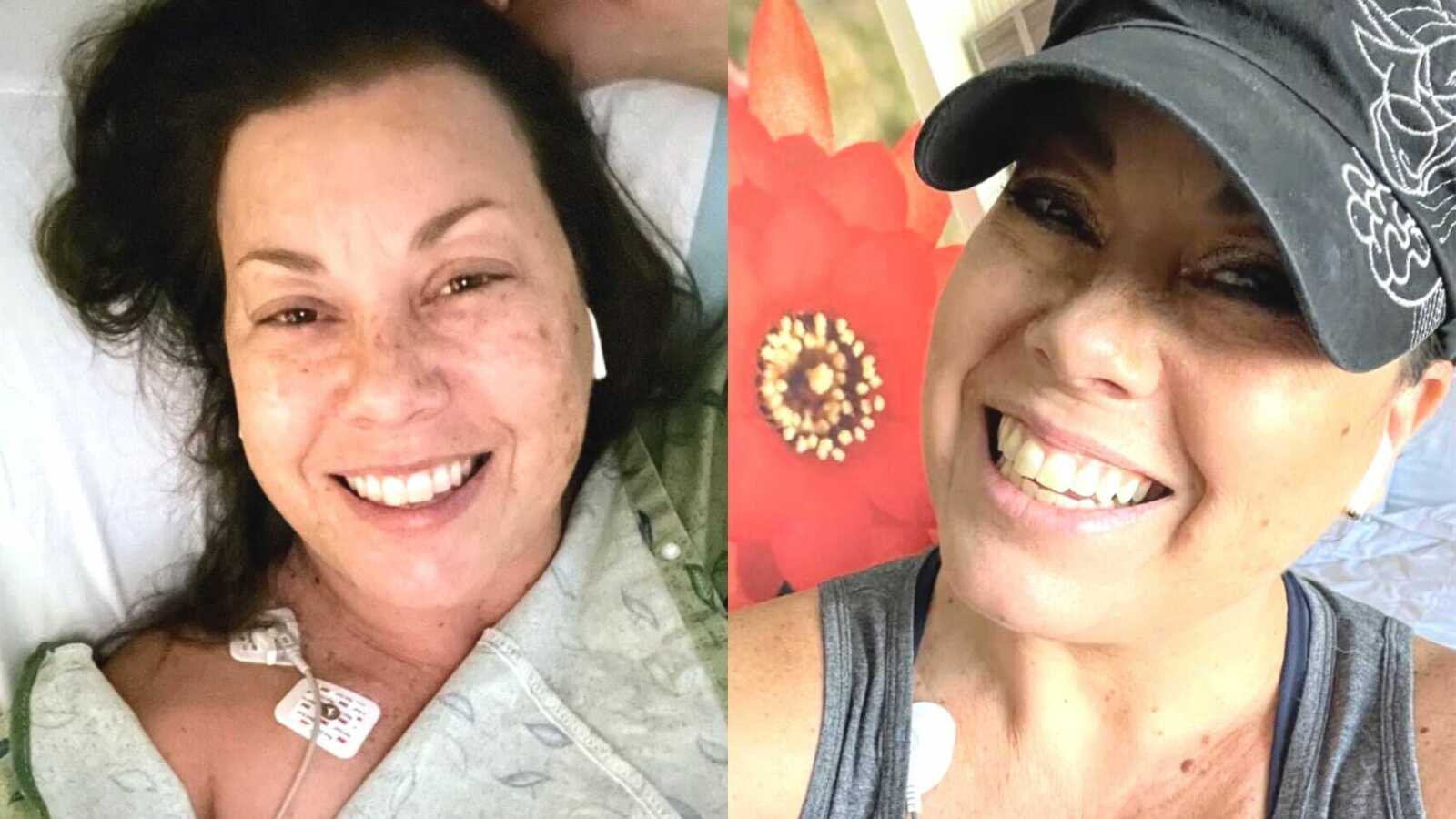“Growing up I always said I would ‘die young’—over the last few decades I’ve learned that ‘young’ is a moving target.
When you are 43 years ‘young’ and your life changes from an unexpected moment, you realize how mortal you really are.
I woke up eight days before my ‘43 and ½’ birthday. It was a Friday morning in hot and sunny Arizona. I began with my usual morning routine. After the teeth brushing, face washing, and pet feeding, I locked the back door after my husband left for work and took a few steps through my kitchen. I felt the right side of my body get heavy. My knee gave out, I couldn’t walk normally, and a lightheaded feeling like a strong high took over. I kept walking, struggling to find my gait. I knew something at that moment was not right. The fear kicked in, the overpowering of trying not to freak out took hold. Somehow, I managed to find the inner zen I would later learn would be needed for the rest of my days.

That morning, I had a fellow animal rescue friend coming over to clean the couches and rugs. We had it scheduled for a while, and I really wanted to make sure I kept the appointment so I could support her family at that time. I also had a telephonic meeting with my ACLU team to discuss a large project. I proceeded with handling both matters. I called my doctor: he wasn’t in, and I was told by the staff to go to the ER based on my concern of stroke-like symptoms. My face wasn’t drooping, I could still talk… I figured maybe it was just my back and neck. I called my sister-in-law, also a doctor. She returned my message and strongly urged me to go to the ER, not to wait through the weekend. She said since both my arm and my leg were affected, she was very concerned.
Off I went…I live in a rural area, not necessarily equipped to handle all of the serious matters. I waited in the lobby for nearly three hours, convinced I must be okay. Yet, I remember just being so tired. I just knew I was where I needed to be. When I was admitted to the ER, I was greeted by friendly, weary, hospital workers. COVID was once again taking its toll on the pace of care and the staff. I tried to be positive. I was waiting to get the CT scan of my brain done when a man was rushed into the curtained area next to mine, in obvious life-or-death condition. The medical team began performing life-saving measures and intubated the man. All I could think was, ‘He needed the care more than I did.’ I was okay, by comparison.
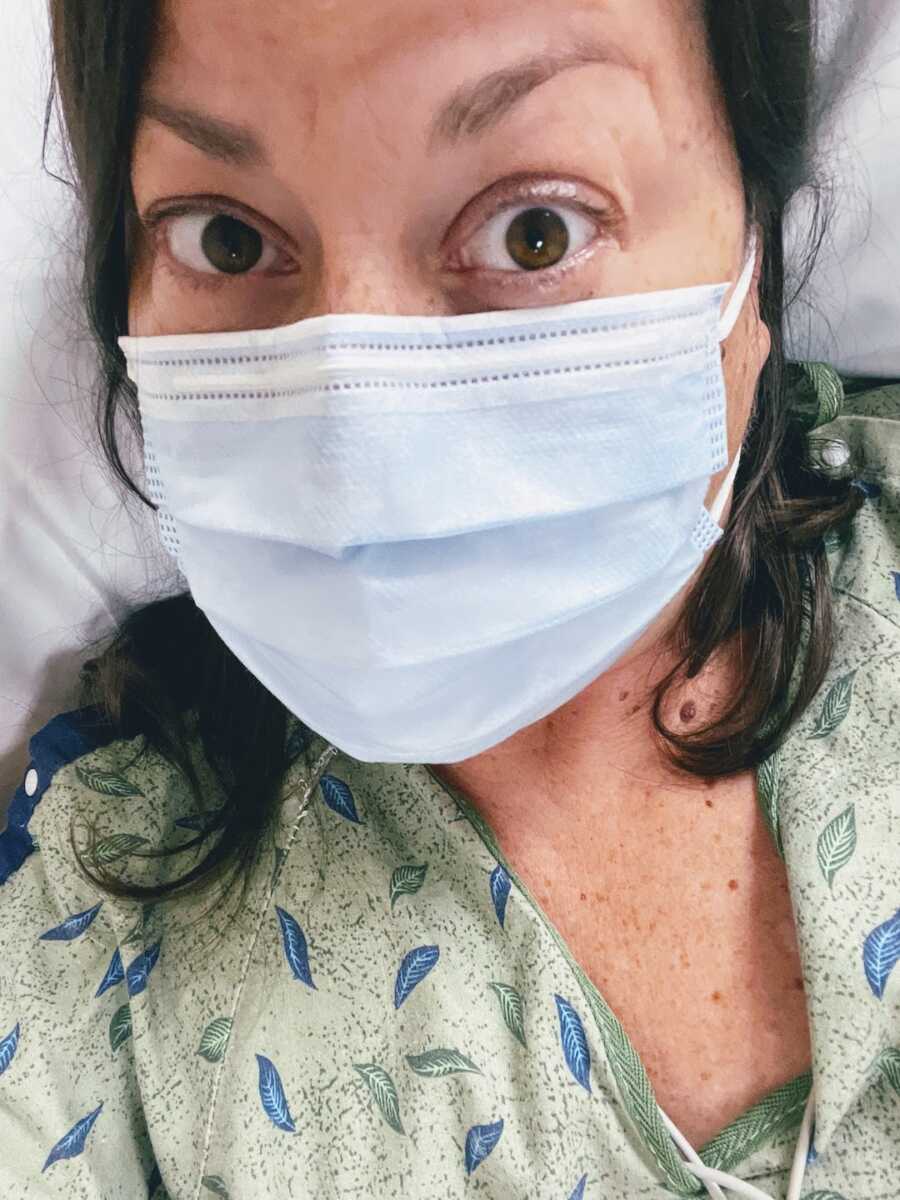
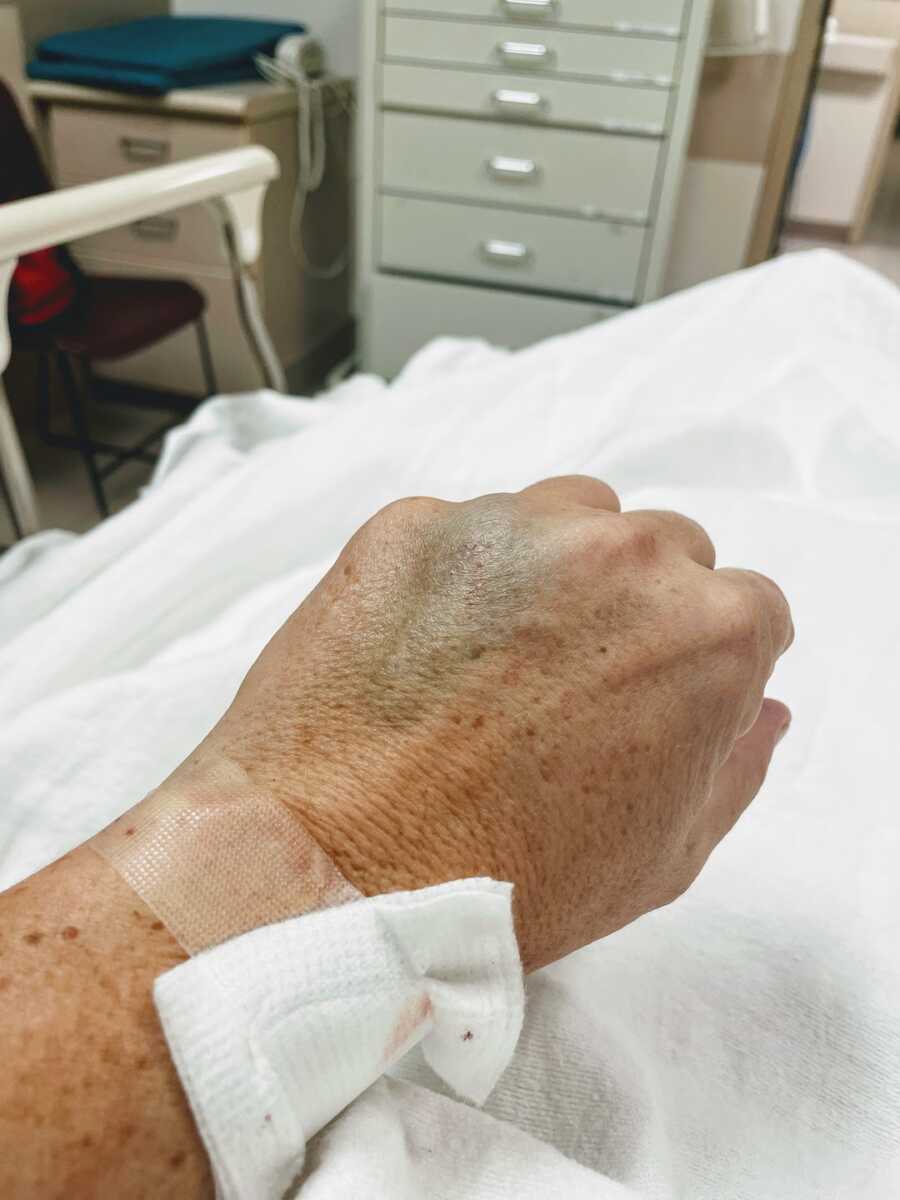
The tech came in to wheel me to the scan. I joked with him that I didn’t think I would be getting back in that room when we returned. He said I would. We returned to see both sides of the ER room full of equipment to help save that man’s life. My mobile stretcher took a position in the hallway, where I remained for over an hour. I listened, looked at the entry doors while teams of paramedics were bringing in patients from ambulances as there was a bad monsoon occurring outside. In AZ, the joke is no one knows how to drive when it rains. Accidents are common in those conditions, and I was witnessing it firsthand. It kept my mind from going to dark places. A doctor came by at some point as I was finally sleeping, facing the wall of the hallway. He woke me up with the most gentle touch to the shoulder and asked if I was okay. He reassured me I would be back in the ER room soon.
Upon returning to the room, I was informed that my CT scan was negative for a major clot or blockage. The ER doctor told me we were on ‘team migraine’ for the night and I would receive an echocardiogram and MRI in the morning. They were moving me to the ICU for the night. In part, because they didn’t have a bed available anywhere else, and in part because I would have consistent care throughout the night. I had never stayed in the hospital like this before. I remembered being 8 and having my tonsillectomy. My mom never left my side and tickled my arms and hands with her long nails to constantly soothe me and try to help me sleep. What I would have given for her to be there in that moment, in the ICU. Instead, I was alone. No one was allowed to be there overnight. My nurse became my only other human connection. She was wonderful. She was reassuring. She took great care of me. The room I was in had covers on the large fluorescent light panels above my bed. Large, beautiful butterflies against the sky on the covers were the only other signs of life in the sterile room.
I cried when I finally had a moment to take in the severity of my situation. Even though I didn’t have any answers, I knew damn well this was not ‘team migraine’ and awaited the next round of tests to determine what was happening to me, my body, and my mind.
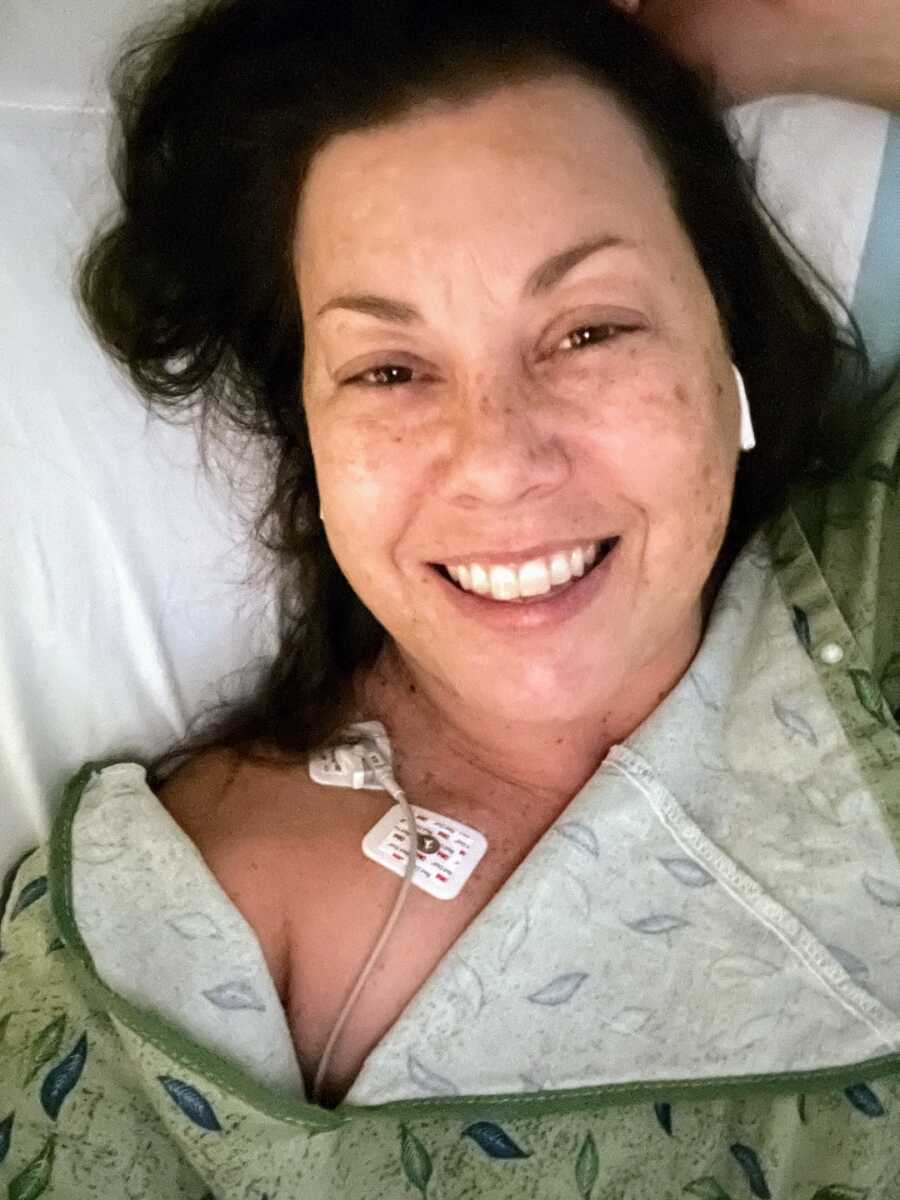
Saturday morning, I was taken for my MRI. True fear still hadn’t set in. I kept mentally preparing myself. When I still had not seen the doctor with any results and it was approaching 2 p.m., I began to make my own plan to self-discharge from the hospital. I had not received any IV medication, no test results indicating anything was wrong with me. I thought, ‘Maybe I really am on ‘team migraine.’’ And then, at 4 p.m., my life changed forever. The young doctor came into my ICU room, sat down next to me, and said, ‘Your MRI came back, you’ve had a small-vessel stroke.’ People talk about moments where the wind is knocked out of your soul… this was one of those moments for me. I think time stood still for a couple of minutes while I processed the news. I had a stroke. I was in the ICU. I had a stroke. Now what? He showed me the MRI images and there was a white space, a rectangle, on the left side of my brain, a little below the ear. That was the permanent mark, like a tattoo of my stroke.
The doctor explained to me that he wanted me to stay another 24 hours. I needed to be observed and placed on blood thinners. I let go of any idea of self-discharging from the hospital. I settled into the fact that I was spending another night. I made dreaded phone calls to my parents to tell them what was happening. I stayed strong while I could and shed tears into my rubber-covered hospital pillow when I was alone.
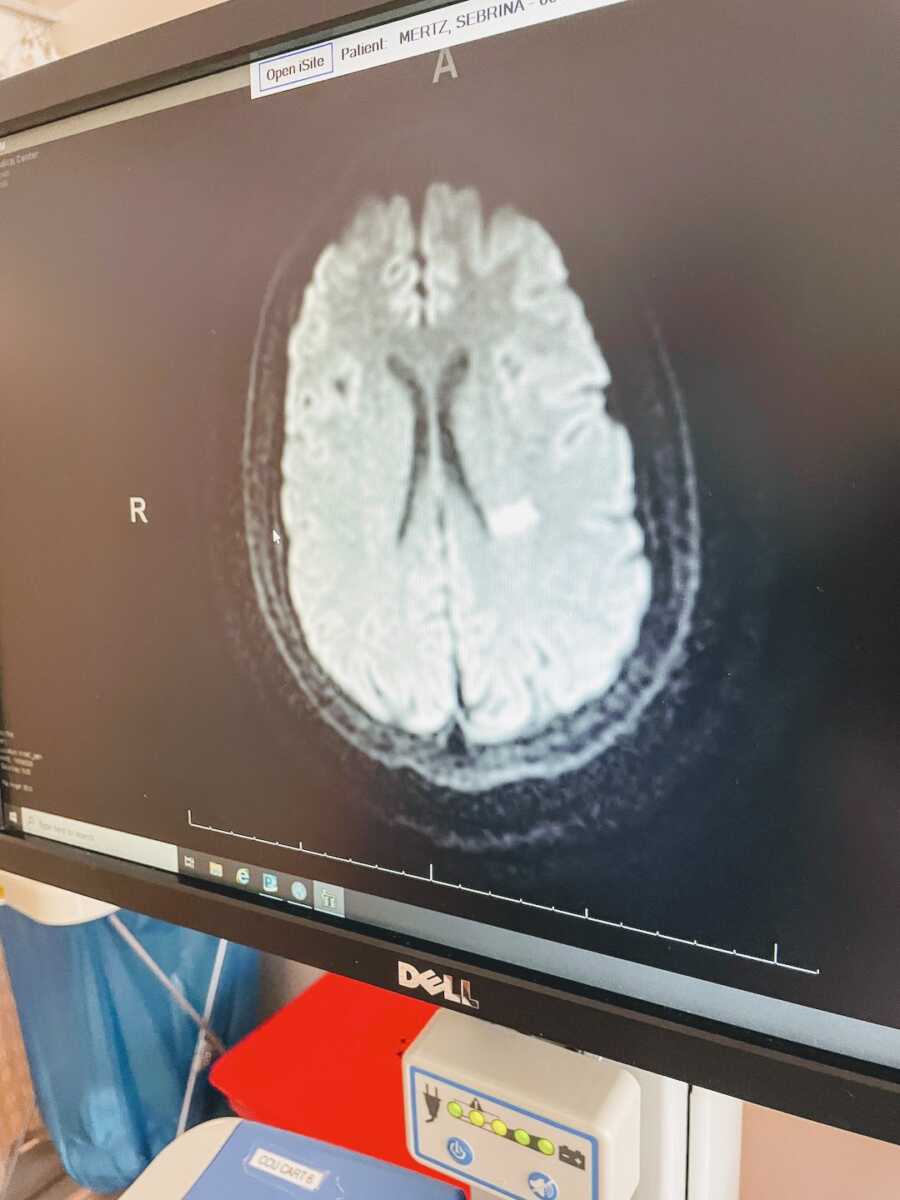
I was fiercely determined to regain the use of my right side. A friend that had extensive experience working in the physical therapy department referred me to a neuro-therapist. I worked hard my first two weeks to regain my normal walk and right arm. And I did. I recovered quickly, physically, but my mind was wounded. I had extreme mood changes, I would wake up crying, and my usual temper was now triggered in an instant. I told my mother at one point while recovering from a physical therapy session as I threw my arms above my head, that I was like that actress in ‘Superstar’ but instead, I was a ‘stroke star’—I think that was the first time I really laughed in days. It was all too much… but I was showered with love, support, and compassion from my immediate family, friends, community members, and social media. I was not a stranger to publicly sharing my story. I had been diagnosed with COVID twice in 2020. I was very open about my journey and about being a long-haul patient. I felt the same about my stroke. So, I did the only thing I knew how to: I wrote about my story. I returned to the press once again, for moral support, to support others, and to continue to increase awareness.
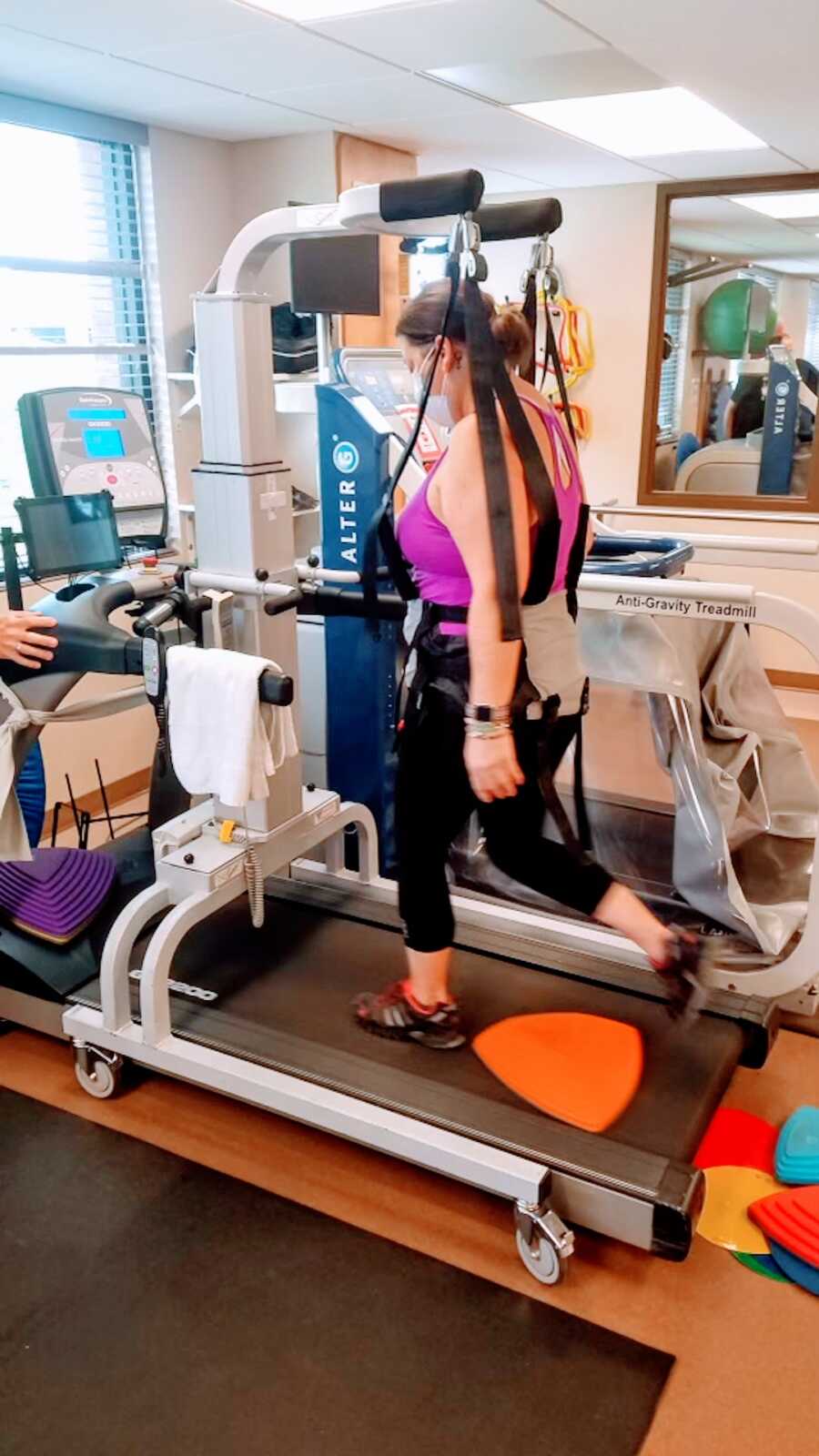
The question of why—there were many: why the stroke, why me, why now… those remained unanswered with any certainty until my amazing neurologist at Barrows ordered a battery of lab tests to determine if I had any blood clotting diseases or disorders. I am a ‘tough stick’ in the medical field when it comes to drawing my blood. I had to have 16 tubes taken for the lab tests in early September. I told the PICC (Peripherally inserted central catheter) line nursing team that had amassed to assist with the challenge that this was like having a date with a team of vampires. We all laughed. I remained determined to be kind and to keep a sense of humor, despite my anxiety.
I wasn’t prepared for the follow-up appointment with my neurologist to discuss the results. I truly believed my team of doctors, my neurologist, cardiologist, and family physician were all just doing whatever they could to rule everything out and conclude this was just an odd fluke of a stroke. I was wrong. I was diagnosed on September 29, 2021, with a very rare blood clotting disorder called APS (antiphospholipid syndrome). This caused my stroke. A person becomes afflicted with APS when their body produces abnormal antibodies by their immune system or by fighting an infection. The only infection I have been fighting is COVID. This diagnosis brings the past year of my life full circle. COVID has been the gift that keeps on giving…but it has been instrumental in teaching me to truly embrace the important things. Life is truly a gift. Each moment, each day…we aren’t ever guaranteed another good day. I am known for telling my criminal defense clients, ‘It’s not forever, it’s just for now’ in an effort to help them overcome their difficult circumstances. It has been my way to shift their focus and perspective. Now, I repeat that little phrase as a mantra to myself.”
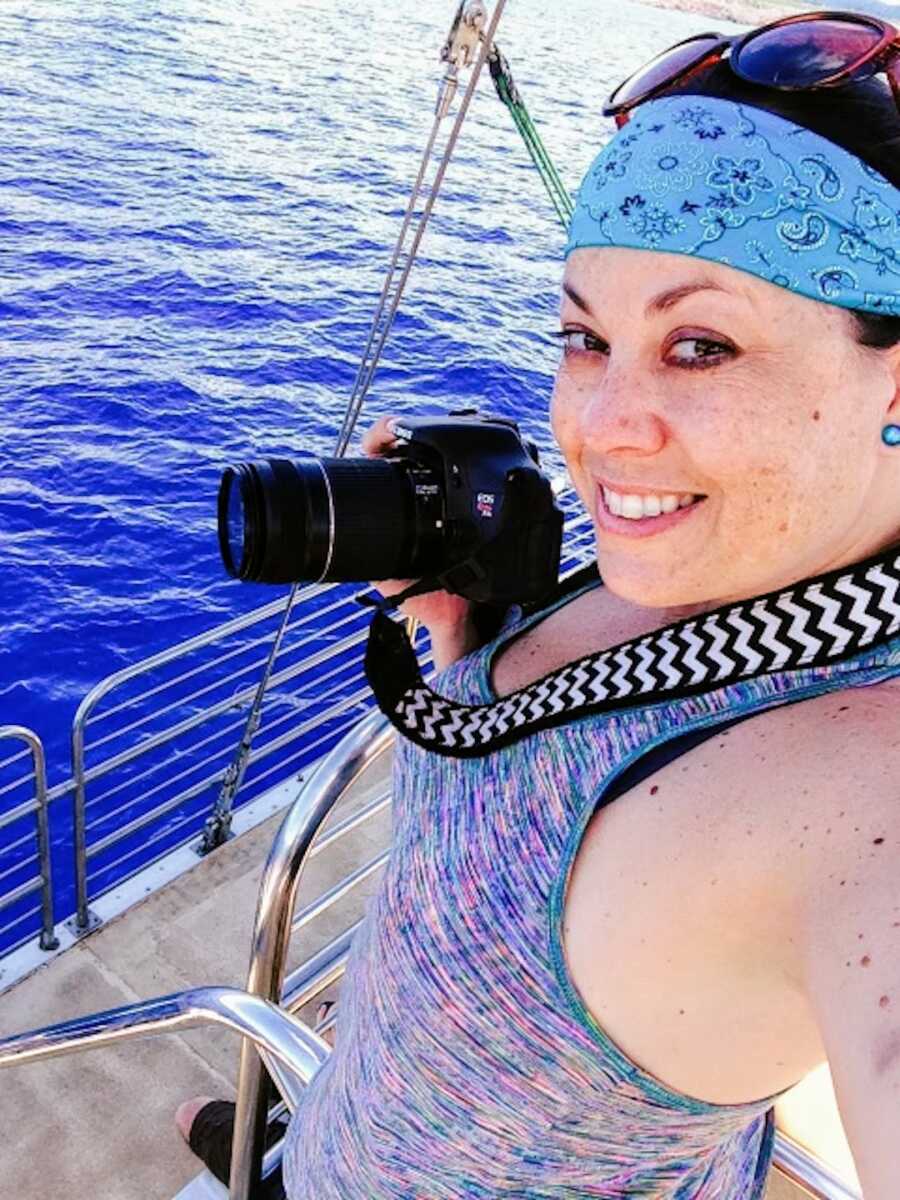
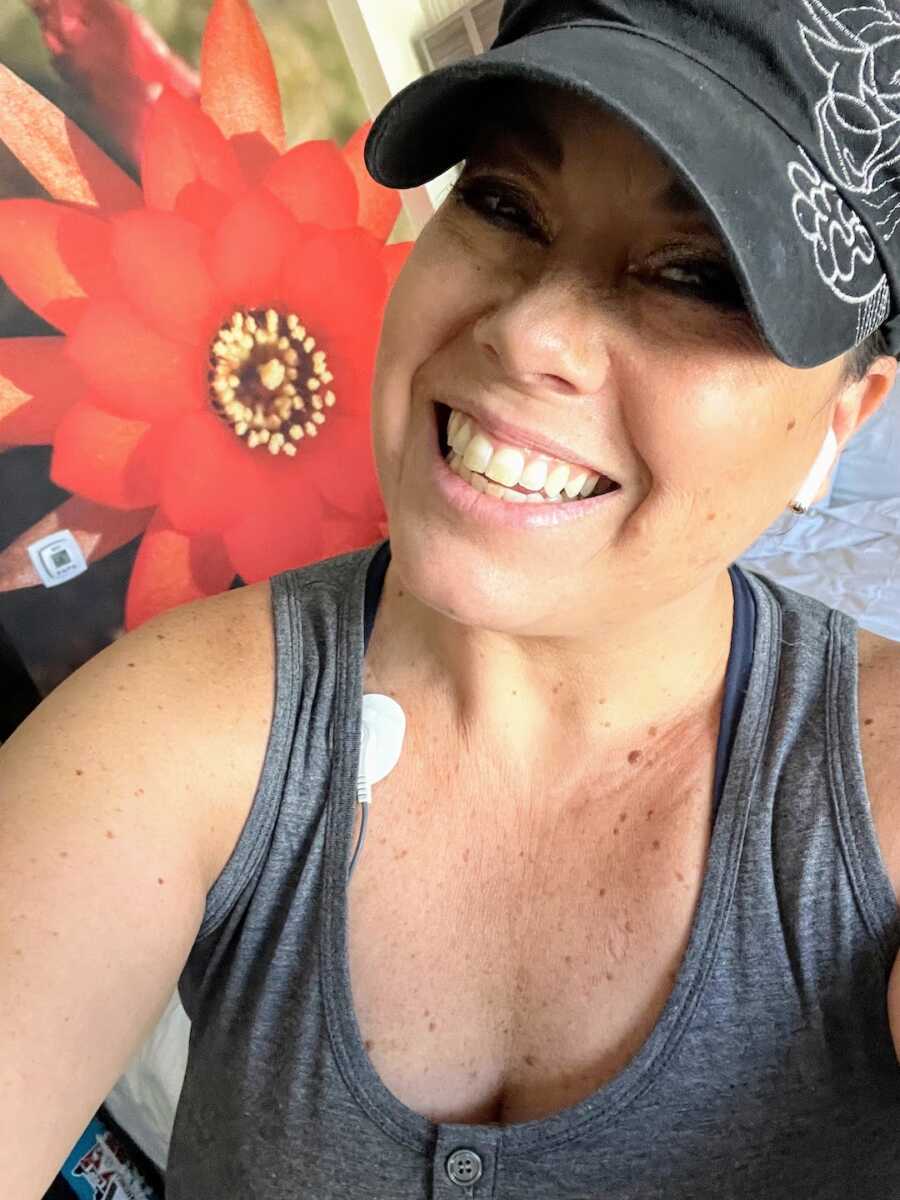
This story was submitted to Love What Matters by Sebrina M. Shaw of Cottonwood, AZ. You can follow her journey on Instagram, Facebook, and TikTok. Submit your own story here, and be sure to subscribe to our free email newsletter for our best stories, and YouTube for our best videos.
Read more stories like this:
Provide hope for someone struggling. SHARE this story on Facebook with friends and family.

